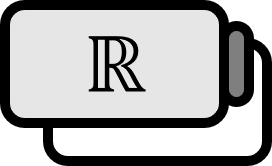Partition, Riemann Sum, Riemann Integral
Partition1
Let’s assume the interval $[a,b]$ is given. The partition $P$ of $[a,b]$ is defined as follows.
$$ P := \left\{ x_{0},\ x_{1},\ \cdots, x_{n}\right\},\quad a=x_{0} <x_{1}<\cdots < x_{n} =b $$
And $\Delta x_{i}$ is defined as follows.
$$ \Delta x_{i} :=x_{i}-x_{i-1},\quad i=1,2,\cdots,n $$
Explanation
Simply put, a partition is a set that contains all points at the ends of an interval and all boundary points within the interval when the interval is divided. An important point is that to talk about a partition, it is necessary to specify which interval it pertains to. That is, one cannot merely speak of a partition; one must refer to the partition of a certain interval.
Riemann Sum
Let $f$ be a bounded function defined on $[a,b]$, and let $P$ be a partition of $[a,b]$. Also, let’s assume $M_{i}$ and $m_{i}$ are as follows.
$$ \begin{align*} M_{i} &=\sup f(x),&(x_{i-1} \le x \le x_{i}) \\ m_{i}&=\inf f(x), &(x_{i-1} \le x \le x_{i}) \end{align*} $$
Then, $U(P,f), L(P,f)$ is defined as follows, and they are called the $P$-related upper and lower Riemann sum of $f$, respectively.
$$ \begin{align*} U(P,f) &:=\sum \limits _{i=1} ^n M_{i} \Delta x_{i} \\ L(P,f) &:= \sum \limits _{i=1} ^{n} m_{i}\Delta x_{i} \end{align*} $$
Explanation
The Riemann sum approximates the area under a function by dividing the interval. For a given partition $P$, the upper sum refers to the largest value, and the lower sum refers to the smallest value. If the approximation is so close that there is no difference between upper and lower sums, it can be considered as the area under the graph of $f$.
Riemann Integral
The upper Riemann integral of $f$ over $[a,b]$ consists of taking $\inf$ over all partitions $P$ of the interval $[a,b]$.
This is defined as the supremum of the upper sums regarding each partition $P$ and is represented as follows.
$$ \begin{equation} \overline{\int _{a}^{b}} f dx := \inf \limits_{P} U(P,f) \label{eq1} \end{equation} $$
Similarly, the lower Riemann integral of $f$ over $[a,b]$ consists of taking $\sup$ over all partitions $P$ of interval $[a,b]$.
$$ \begin{equation} \underline {\int _{a}^b } f dx := \sup \limits_{P} L(P,f) \label{eq2} \end{equation} $$
When the upper and lower Riemann integrals of $f$ are equal, $f$ is considered Riemann integrable over $[a,b]$ and is denoted as follows.
$$ f \in \mathscr{R}= \left\{ f : f \text{ is Riemann integrable} \right\} $$
$\mathscr R$ is the set of Riemann integrable functions. Moreover, the common value of $(1)$ and $(2)$ is denoted as follows, and this is referred to as the Riemann integral of $f$ over $[a,b]$.
$$ \underline {\int _{a}^b } f dx = \int _{a} ^b f dx = \overline {\int _{a}^b} f dx $$
Or
$$ \int _{a} ^b f(x) dx $$
Explanation
The upper integral approximates the area of $f$ slightly larger (upper sum) among the smallest ones, and the lower integral approximates the area slightly smaller (lower sum) among the largest ones. Thus, when these two are identical, it can be stated that the area under the graph of $f$ has been accurately approximated.
Furthermore, as $f$ is bounded, there exist two constants $M$ and $m$ that satisfy the following.
$$ m \le f(x) \le M \ \ \ (a\le x\le b) $$
Therefore, the following holds for all partitions $P$.
$$ m(b-a) \le L(P,f) \le U(P,f) \le M(b-a) $$
Walter Rudin, Principles of Mathematical Analysis (3rd Edition, 1976), p120-121 ↩︎
